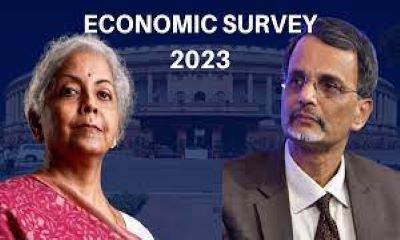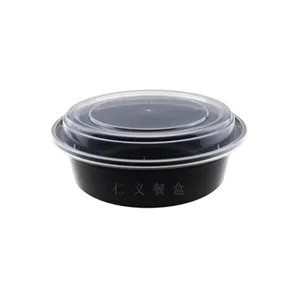Economic Survey 2022-23: Industry sector witness growth of 4.1%

The Economic Survey 2022-23 tabled in the Parliament by the Union Minister for Finance & Corporate Affairs Nirmala Sitharaman stated that the industry sector witnessed modest growth of 4.1 per cent in FY23 compared to the strong growth of 10.3 per cent in FY22.
This is likely on account of input cost-push pressures, supply chain disruptions, and the China lockdown impacting the availability of essential inputs and slowing the global economy, added Sitharaman.
The Overall Gross Value Added (GVA) by the industrial sector rose 3.7 per cent, based on data available for the first half of the FY23, which is higher than the average growth of 2.8 per cent achieved in H1 of the last decade, stated the Economic Survey 2022-23.
The Survey highlighted that the PLI schemes are set to unlock manufacturing capacity, boost exports, reduce import dependence, and lead to job creation for both skilled and unskilled labour. The Survey was optimistic that easing input prices and conducive demand conditions will support overall Industrial growth.
The Survey warned that export growth may slow further in the second half of the current financial year and remain weak beyond that, too, if the global economy falls into recession. It added that however, the strong domestic consumption growth and investment revival is expected to keep industrial production humming.
The Survey noted the growth of the eight core industries of coal, fertilizers, cement, electricity, steel, and refinery products has held steady, reflecting a broad momentum in industrial activity.
Production of coke and refined petroleum has also increased, fetching high returns in a global market where crude oil prices were higher than in FY22.
Chemicals and chemical products such as caustic soda, soda ash, fertilisers and petroleum products have also performed well, contributing to sustaining the growth momentum in the agriculture sector while increasing exports. At the same time, a few product categories, including textiles, apparel and leather, have been showing tepid growth, as export demand for these products has been mellowing with the slowing of global output and demand. Growth in pharmaceutical output has slowed due to an unfavourable base effect and the waning of the pandemic.
Climate-Smart Farming Practices is slowly gaining acceptance with farmers using clean energy sources like solar for irrigation. The farmers have been incentivised to transfer electricity generated through solar to the local grid. Crop yield prediction models using artificial intelligence and drones for monitoring soil and crop health have been initiated. Smart farming also enables crop diversification, which will help farmers reduce their dependence on monsoons for water. There are over 1,000 agritech start-ups in India. These assist farmers in improving farming techniques.
Commenting about the Economic Survey 2022-23, R. G. Agarwal, Chairman Dhanuka Group said, “Food grain production in the country has been rising continuously over the last few years but in comparison to developed as well as some of the developing nations including China, our average per acre production is much lower. In fact, it is one-third in comparison to China. Thus, there is a lot of scope to enhance production further. For this, the government should further incentivise R&D activities in the agriculture sector and should encourage the adoption of newer technologies like drones, etc. Also, the usage of quality agri-inputs including fertilizers and other agrochemicals in appropriate quality and right manner should be encouraged.
Dr. Kalyan Goswami, Director General, Agro Chem Federation of India (ACFI) said, “As per the Economic Survey, the agriculture sector grew 4.6% annually in the last 6 years. It is a very good sign. Key factors boosting the sector include higher MSP extended by the government. It is also attributed to growing agri-related credit, income support schemes, and insurances. We urge for the agri related credit and income schemes to continue in the future too.”
The Survey highlighted that Indian pharmaceutical exports achieved a healthy growth of 24 per cent in FY21. It expressed hope that India’s domestic pharmaceutical market is estimated to grow to US $65 billion by 2024 from estimated US $41 billion in 2021 and is further expected to reach US $130 billion by 2030.
Carrying forward this growth momentum, drug and pharmaceutical exports during April-October 2022 was 22 per cent higher than the corresponding pre-pandemic period of FY20, noted the Survey. It added that Cumulative FDI in the pharma sector crossed the US $20 billion mark in September 2022 and FDI inflows have increased four-fold over five years until September 2022, to US $699 million, supported by investor-friendly policies and a positive outlook for the industry.
Further it added, growth in credit to MSME was buttressed by rebounding consumption levels, particularly in the services sector. Consequently, the share of MSMEs in gross credit offtake to the industry rose from 17.7 per cent in January 2020 to 23.7 per cent in November 2022.
The Survey highlighted that the FDI inflow jumped to US $21.3 billion in FY22 from US $=12.1 billion in FY21 as the pandemic-driven expansionary policies of advanced economies led to a surge in global liquidity.
Economic Survey stated that there was a 46 per cent growth in the domestic filing of patents over 2016-2021, signaling India’s transition towards a knowledge-based economy.
Discussing the achievements of start-ups, the Survey highlighted that an impressive 9 lakh+ direct jobs have been created by the DPIIT recognized startups (self-reported), with a notable 64 per cent increase in 2022 over the average number of new jobs created in the last three years. About 48 per cent of our startups are from Tier II & III cities, a testimony of our grassroots’ tremendous potential.
The Survey highlighted that adoption of Industry 4.0 technologies such as cloud computing, IoT, machine learning (ML), and artificial intelligence (AI) in the Indian manufacturing sector is underway, however, large-scale adoption is yet to happen and an enabling environment is rapidly developing.
The Survey mentioned that various Government Initiatives such as SAMARTH (Smart Advanced Manufacturing and Rapid Transformation Hubs) Udyog Bharat 4.0, establishment of the Centre for Fourth Industrial Revolution is the way forward in achieving the goals of Atma Nirbharta and its ambitions of becoming a key player in global value chains.
The PLI scheme is expected to attract a Capex of approximately Rs. 4 lakh crore over the next five years having a potential of generating employment for over 60 lakh in India stated the Economic Survey. It added that Sectors under which the PLI scheme has been announced currently constitute around 40 per cent of the total imports. The scheme, spread across 14 sectors, can enhance India’s annual manufacturing Capex by 15 to 20 per cent from FY23.
The Survey mentioned that around Rs. 47,500 crore (US $6 billion) of actual investment has been made (As per recent reporting from implementing Ministries/Departments); production/ sales of Rs. 3.85 lakh crore (US $47 billion) of eligible products and employment generation of around 3 lakh has been reported and 106 per cent achievement of actual investment reported versus the corresponding projections of FY22.
The Survey stated that more than 100 MSMEs are among the PLI beneficiaries in sectors such as Bulk Drugs, Medical Devices, Telecom, White Goods and Food Processing. Key sectors such as Large-Scale Electronics Manufacturing, Pharmaceuticals, Telecom & Networking Products, Food Processing and White Goods have contributed considerably to investment, production, sales and employment.
On the positive side, easing input cost pressures owing to a fall in international commodity prices augurs well for company margins. Capacity utilisation in the manufacturing sector has been rising. It bodes well for new investment activity in creating additional capacity. Credit growth in the industry has also increased remarkably, suggesting that prospects for Capex investments by companies are brighter. The PLI schemes are set to unlock manufacturing capacity, boost exports, reduce import dependence and lead to job creation for both skilled and unskilled labour.
On the downside, exports are slowing down and are likely to moderate along with the probable global economic slowdown. Volatile international commodity prices and supply disruptions in raw materials can weigh on industrial growth in the wake of new disruptions at the global level. The re-emergence of Covid-19 in China can trigger supply chain disruptions, as was the case during the pandemic period.
On the other hand, if China returns to normalcy from Covid-19, there can be an increase in commodity demand – thus reversing the recent decline in commodity prices. Of course, the strength and duration of the recovery in commodity prices will be a function of many factors, such as the pace of China’s economic recovery and growth outlook in North America and Europe. Notwithstanding such open questions, industrial output in India should continue to grow steadily based on resilient domestic demand.
Recommended Suppliers
 September 23, 2024
September 23, 2024  June 3, 2024
June 3, 2024  June 3, 2024
June 3, 2024  June 17, 2024
June 17, 2024  June 18, 2024
June 18, 2024 














